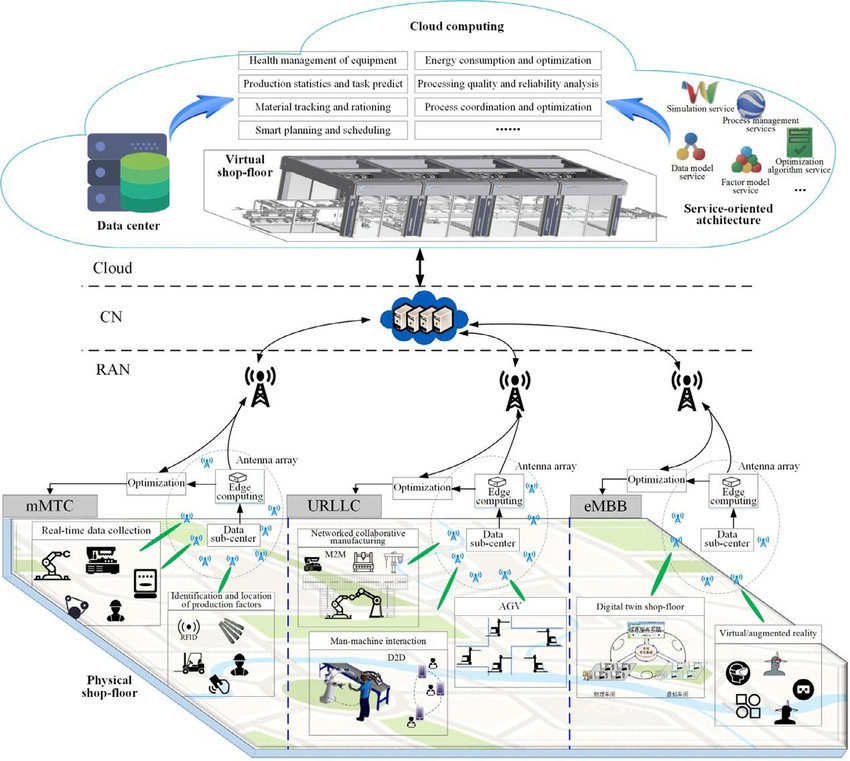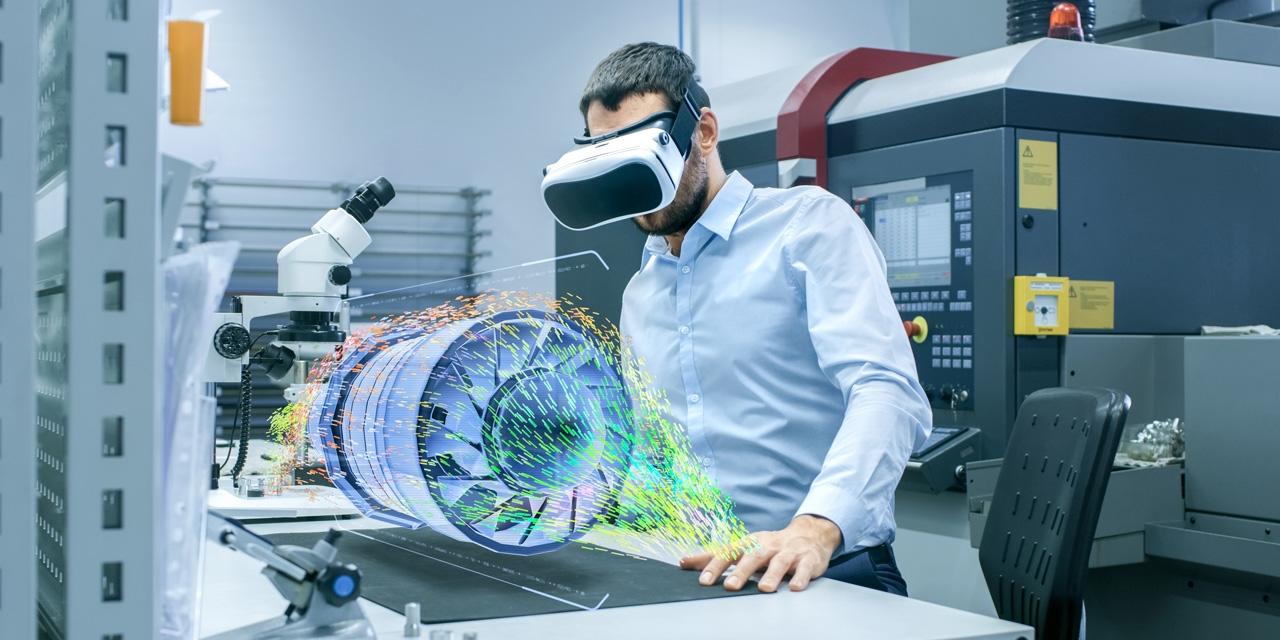5G in Smart Factory IIoT Applications
6 December, 2019

The Advantages of 5G Communications for Production Facility Dense-Network IIoT Applications
Oddly enough, internal 5G dense-network design takes advantage of an engineering shortcoming of the effort to build external 5G networks. These external networks serve the consumer mobile phone market. The engineering challenge for external 5G networks requires devices to operate above the frequency of 25 Mhz (the limit of 4G operations) and go into the mmWave frequency spectrum above 25 Mhz to 28 - 86 Mhz. This higher frequency has the extra capacity for the burgeoning number devices, which are now exponentially increasing with the advent of IoT devices such as wearables, smart homes, smart cities, and mobile phones. The higher frequencies offered from using 5G means more data over the air at faster speeds, reduced interference, and better latency.
In comparison to 4GLTE, 5G operations in the mmWave spectrum suffer from much higher transmission line loss per unit of distance. That makes the 4G infrastructure incapable of supporting a fully enabled 5G operation. It will take anywhere from 5 to 10 years to build the networking infrastructure to support 5G services nationwide. However, internal 5G networks don’t have to worry about the increased transmission line loss problem inside a production facility. Signal degradation is negated and replaced by a challenge to eliminate internal interference issues from the large number of embedded sensors communicating. Here’s how it works: fatory data is sent data collection and storage devices. These data storage devices are just the beginning to a series of computing networks. After storage, data is locally cleaned and data insights are derived at the smart factory level. These insights are then sent via an external 5G network to the external data warehouses and are then combined with data from similar production facilities. A digital twin analysis between varying factories and outputs data determines product design improvements in the long run.
Internal Industrial Internet of Things (IIoT) Networking
The concept diagram below shows the features of 5G architecture needed to avoid self-interference and congestion in using the mmWave spectrum for the IIoT. An important factor of using IIot applications is that they demand high accuracy to determine the proper position information of internal internet access points and servers. This 5G architecture operational concept offers a way to achieve an IIoT network.

Communication is the foundation of IIoT and 5G technology is needed to make the ultra-dense network (UDN) work. The medium connecting application, to network, to physical workfloor is through the use of beamforming technology which reduces mutual interference. External data transmission is handled by large-scale muti-input/multi-output (MIMO) full-duplex technology to handle the data demand. The key to making IIoT applications work is to always remember that smart manufacturing is data-driven. It is only made possible by the creating a cyber-physical manufacturing system (CPMS) to process the data so insights from that data can be sent back to the physical plant. CPMS could not be developed without an IIoT that has the characteristics of smart automation and real-time monitoring. The outcome of all these factors being installed and connected means a massive amount of data throughout will occur. Throughout that 3G, 4G, and 4G LTE technologies cannot handle. However, 5G can provide the necessary throughput because of 3 key technologies it uses:
- An enhanced mobile broadband (eMBB)
- A massive machine-type communication (mMTC)
- An ultra-reliable low latency communication (URLLC) at frequencies of 28 Mhz or higher
Case Studies Designed from Experience

Ericsson is a company at the forefront of 5G technology development via collaboration with other companies and countries. They see 5G as the enabling technology to achieve the smart factory concept. Ericsson is behind a Swedish government project that involves bearing manufacturer SKF. The point of the project was to exercise the data collection and analysis in the real-time aspect of 5G tech. The objective was to facilitate simultaneous product customization and maximum production output without any impact on flexibility, sustainability, traceability, or safety latencies. They set up a realistic production floor of connected machines to generate a large representative amount of data to collect, analyze, and distribute in real-time.
Augmented reality was used to perform troubleshooting to detect operational inefficiencies, predictive maintenance to replace imperfect maintenance procedures, failure diagnostics, and to conduct training for the human interface. The details of the project can be studied in full at this link. The overall mission of the project was to show the possibility of implementing 5G into a modern production facility without decreasing throughput.
Challenges in 5G and IIoT Technologies and Architecture
As has already been mentioned, 5G is not a fully mature technology, and, by virtue of that, IIoT conceptual architectures have some challenges to overcome. These challenges include:
- Millimeter-wave physical characteristics are not understood or stable in frequencies beyond 28 Mhz.
- Large-scale MIMO antenna design is not mature.
- The self-interference cancellation properties of the full-duplex transmission technology are not mature.
- Multiple access technology is still a work in progress.
- The fixed mmWave model has issues to be worked out on path loss, angel expansion, and latency expansion.
- Ultra-dense 5G integration with traditional networks is not entirely compatible with existing network infrastructure.
- The IIoT must adapt to using beamforming tecnhology for local data transmission
- CPMS (digital twin) MBSE development isn’t 100% mature.
Conclusion
The development of the IIoT network on the shop floor is an absolute precursor which must be solved before any real steps can be taken to create the cyber-physical version (CPMS) of it in the cloud. To achieve real-time transmission and processing of massive data in the manufacturing process, the transmission characteristics of high transmission rate, high coverage, low latency, high reliability are urgently needed.












